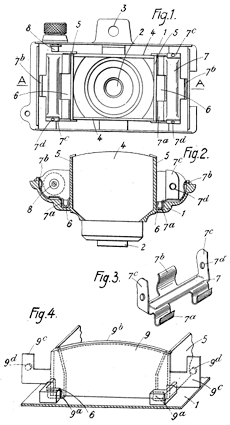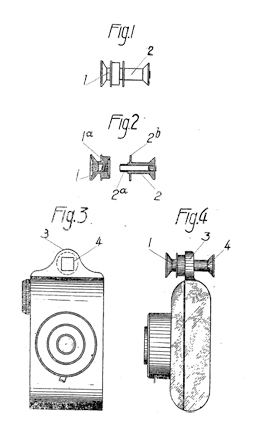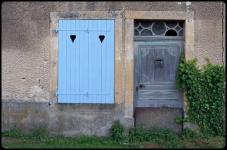|
Artima Arti-six |
Manufactured or assembled in United Kingdom from (Circa) 1950 to (After) 1950.
Index of rarity in France: Rare (among non-specialized garage sales)
Inventory number: 154
See the complete technical specifications
Chronology of cameras Artima
The history of Artima remains relatively unknown, and there is sometimes confusion with the youth press publisher that bore the same name. Currently, no concrete link has been established between the two Artima entities.
During the 1930s, SARL Artima, located at 17 Rue Daru, Paris, registered several trademarks with the Commercial Court of Seine:
- On October 23, 1934, they registered the name "Photo-Duc."
- On September 6, 1935, they registered the trademark "Photo-Magic" (registration number 303466).
- On March 12, 1936, they registered the trademarks "Miami" and "Manitou" (registration numbers 307229 and 307230).
- On August 12, 1937, they registered the trademarks "Artex" and "Week-end" (registration numbers 316293 and 316294).
SARL Artima also filed several patents during this period. At the same time, Artima Ltd filed similar patents in London.
| Country | Date | Patent | About | Requester |
| France | March 23, 1935 | 787768 | Viseur optique amovible pour appareils photographiques | Artima |
| France | January 21, 1936 | 801053 | Perfectionnements aux appareils photographiques et similaires | Artima |
| UK | January 15, 1937 | 488934 | Improvements in Photographic and similar Apparatus | Artima Ltd |


The cameras manufactured or distributed by Artima (?) come in two types: metal box cameras and cameras made of molded material.
The metal box cameras are 6 x 9 format, with fixed focus and no adjustments. They feature a simple meniscus lens, sometimes credited to Boyer. These cameras typically have two viewfinders. A diagonal handle is attached above the rear portion of the camera. The shutter release has a blade-like shape ending in small teeth. The latch holding the rear part in place has a distinctive form. Film winding can be done with a key, although one example has a knob instead.
The other cameras attributed to the brand are made of bakelite. There are two forms:
1. The first is a small camera with a rounded body, with a parallelepiped serving as the darkroom. The viewfinder is located at one of the two ends of the body, typically a simple hole in a hat-like structure. These are likely the early models of the brand.
2. The second form is a larger camera (formats 127 and 120) with shapes similar to or identical to those of MIOM cameras. __________
This 6 x 9 (120 film) bakelite camera bears some resemblance to certain MIOM brand cameras.
The lens is on a screw-in tube. At the end of unscrewing, you can feel four stops corresponding to focusing distances of 4 feet, 6 feet, 13 feet, and infinity. This scale is indicated on the body of the camera, next to the screw-in tube, on the right. Depending on the stop, the shutter release is positioned between a horizontal and a lower position (as shown in the photo, where the distance selection is set to "Portrait: 4 ft"). The other metal tab (at the top of the lens in the photo) is the aperture selector (9, 12.5, or 18). To the right of the lens is another, much smaller slider incorporated into the front face. It allows you to choose the shutter speed (1/25, 1/50, or 1/100 second). Its symmetrical counterpart allows you to choose between a speed and a bulb mode.
This camera was manufactured in London in the early 1950s.

Interesting links or bibliography :
| Sur Camera-wiki.org, suggested by Sylvain Halgand |
Add a link or element of bibliography, a picture taken with this camera, a picture of box or an ads about this camera
Your photos taken with the same camera:
Cameras from Ebay France (Artima) (Uploaded each 3 hours)








